Ralph Sunley was born in Yorkshire on 25 May 1918.
Ralph was called up in November 1939 and joined the Royal Sussex Regiment at Chichester Barracks. In 1942, Corporal Sunley was sent to the Middle East where he took part in the battle of El Alamein. After the battle there were not enough men left to make up a Battalion, and so in January 1943 the War Office decreed that the 2nd Battalion Royal Sussex would not disband but be brought up to full strength from its two TA Battalions and converted to a Parachute Battalion.
The 200 Officers and Men, including Sergeant Sunley, who had volunteered to parachute and were accepted as fit, formed the nucleus of the 10th Battalion, The Parachute Regiment at Kabrit.
Sgt Sunley was on course 28 at Ramat David, which started on 24 March 1943 and carried out his first jump on 31 March. He sprained his ankle on the second jump and was promptly told that if he didn’t finish his jumps he couldn’t join the 10th Bn. As soon as his ankle was strong enough he did his remaining jumps, which included completing the final three jumps in one day.
Sgt Sunley had been the gun Sergeant on a 6 Pounder Anti-Tank gun in all actions from the Quattara Depression to Mersa Matruh, and in Support Company of the 10th Bn he was made a Section Leader of a tank hunting section of twelve men. He was given the name Joe, because the other men on his parachute course said that ‘Ralph’ was not suitable for a para!
In June the Battalion, along with the rest of the 4th Para Brigade, moved along the North African coast to Tunisia. They were to prepare for the airborne assault on the island of Sicily, but in the end they were not needed and prepared themselves for further operations.
In 1943 it was planned to land the 1st Airborne Division at the Italian Naval Base at Taranto. On the night of 8 September the 2nd and 4th Para Brigades sailed from Bizerta in a minelayer and five Cruisers of the Royal Navy and in the American Cruiser, Boise. The men of the 10th Battalion were amongst the first to be landed from HMS Penelope in Taranto harbour.
Initially the Battalion’s task, along with the rest of the 4th Para Brigade, was to hold a perimeter around the town whilst the rest of the Division landed. By midnight the 4th Parachute Brigade was advancing north to attack the town of Castellaneta.
In December the whole of the 1st Airborne Division returned to the UK to prepare for the Second Front. After landing at Liverpool on the 10 December the Battalion was transported to their new base area around Oakham in Rutlandshire.
After several cancelled operations they were informed in the early hours of 17 September 1944 that they would be flying out that day. The Dakota aircraft left at midday and less than two hours later they were on the Ginkel Heath to the west of Oosterbeek, with Sgt Sunley as the section commander of the anti-tank platoon, in support of A Company.
The parachute descent onto Drop Zone ‘Y’ was opposed and the Battalion suffered a number of casualties, including the shooting down of two of their planes. After fighting their way off the DZ the Battalion set out on its task to take the northern part of the town of Arnhem. The Battalion fought hard to keep the Polish Landing Zone clear, and were then ordered to withdraw south over the railway into a perimeter being set up to hold a bridgehead north of the Rhine. Under heavy fire and after 24 hours in action, the Battalion had lost 150 men. By the Tuesday afternoon they were down to 250-300 men.
They advanced towards Wolfheze and it was at this time that Captain Queripel was wounded during fierce fighting. Sgt Sunley was with Captain Queripel in a small crater next to the Wolfheze level crossing when he was told that he was to take his men and go. As Sgt Sunley had been in the Royal Sussex Regiment with Captain Queripel, he was unwilling to leave him. Captain Queripel however, knowing he was fatally wounded, ordered Sgt Sunley to go. That was the last Ralph saw of Captain Queripel who was later awarded the Victoria Cross for his heroic efforts at that spot.
After three days of fighting and without any sleep, Sgt Sunley fell asleep in a trench along with two other members of the Battalion. When they woke they saw a German soldier standing over them pointing a rifle in their direction. Ralph was taken prisoner of war and was forced to march 400 miles to Stalag 12A in Limburg.
He stayed there until he was liberated at the end of the war. His own account is as follows: ‘Captured. Spent a week in cattle truck with 59 others. Transferred to Upper Silesia for being mixed up in an escape effort. Bombed by RAF en-route. Marched for approximately one month away from Russians. Finally released by Americans and flown to England. Verdict – do it again!’
After the war Ralph worked as a gardener on a local country estate and in his final years was allowed to live in a bungalow belonging to the estate.
'Joe' died on the 30 December 2008, aged 90. His funeral service took place in the Royal Garrison Church in Aldershot on 23 January 2009.
By Rebecca Blackburn with information supplied by Bob Hilton
Read More



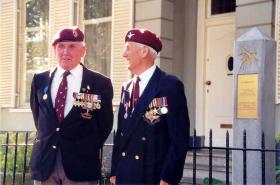
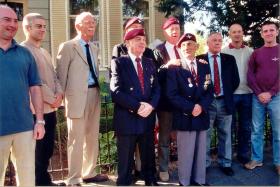
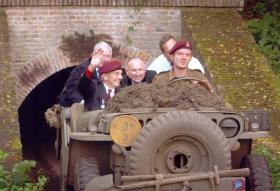
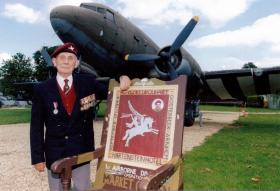
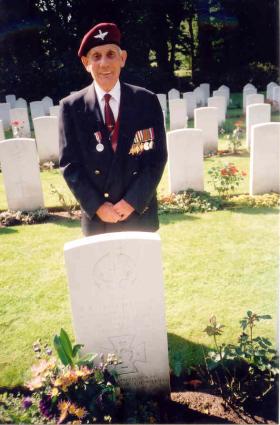
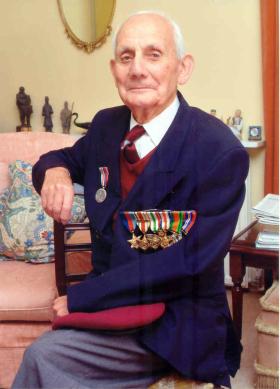
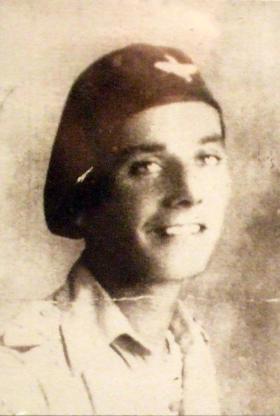
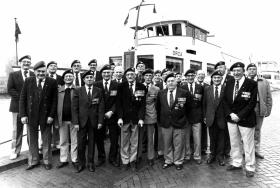
Latest Comments
There are currently no comments for this content.
Add Comment
In order to add comments you must be registered with ParaData.
If you are currently a ParaData member please login.
If you are not currently a ParaData member but wish to get involved please register.